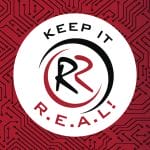A Sales Playbook is your company’s blueprint for how to prospect and close a deal.
Today I am sharing with you a seemingly small but SIGNIFICANT three-step system out of my playbook. You’ll want to habitually implement this process after EVERY call with a potential prospect or client.
1. Always have a next action
First, at the end of every meeting, you want to summarize verbally what is supposed to happen next and who’s doing what.
For example: “Okay, Bob, I’m going to go back to find out if we can move the start date up and get you a quote on a new VoIP system. I should have that ready by Wednesday of this week. You are going to go over what we discussed with your CFO. What time on Wednesday are you and your CFO available to go over that with me?”
Then schedule it. Don’t leave the site of a sales call without the next action scheduled.
“So, as it stands today, you’re under contract and cannot make any changes until July. You’d like me to reach back out to you at the end of June to initiate an assessment to provide you with a competitive bid. Would it be inappropriate to book that assessment now?”
2. Summarize your meeting and next actions IMMEDIATELY in an e-mail to the prospect/client
This is CRITICAL.
Second, do not wait to do it later or at the end of the week.
Do it IMMEDIATELY after the call or in your car before you leave the parking lot.
For starters, it’s impressive. It shows you were paying attention and ensures you didn’t miss any key points.
For example: Bob, as per our meeting today, I’m going to discuss your project with our Team Lead to see if I can move the start date up to next week. I’m also going to get you a quote for a new upgraded VoIP system with a timeline to discuss on our call Wednesday, June 10, at 9:00 a.m., with you and your CFO. I’ve sent you and your CFO a calendar invite. Should anything change, please let me know ASAP.
3. Make sure ALL your notes and next actions get SCHEDULED and DOCUMENTED in your CRM
Third, leave a paper trail so the next person can see the history.
Our MAP CRM allows for your Outlook e-mail to be integrated directly to the contact, so you don’t have to do double work – but you have to make an effort to do it.
To clarify, this is especially important if you hire salespeople.
You do NOT want a sales rep walking around with all of that intelligence in their heads. What happens if they leave? How can your next rep know what’s been discussed?
Further, reps inputting notes allow you to track activity and see if any progress or work is made on that account.
Finally, if you want a really powerful fourth step, send a handwritten thank-you note to all prospects you’ve met for the first time, and then again after the conclusion of the sales process, regardless of whether they buy or not.
Jack Daly called it his “money bag,” which was a pencil-case-type bag that contained thank-you cards, postage stamps, and a pen.
After meeting with a prospect, he would send a handwritten thank-you card to everyone in the meeting, slap a stamp on it, and drop it in the mailbox.
He called it his MONEY bag for a reason – it helped him close millions of dollars by making him stand out from his competition.
In the ultra-competitive world we sell in, you need every edge, every advantage you can get.
Trust me when I say a handwritten note goes a LONG way in differentiating yourself from the competition.

